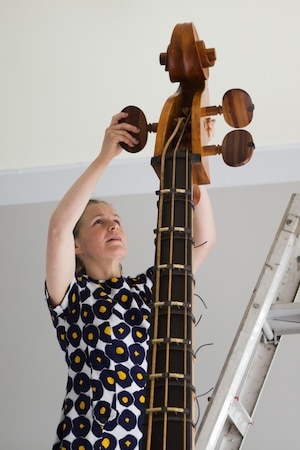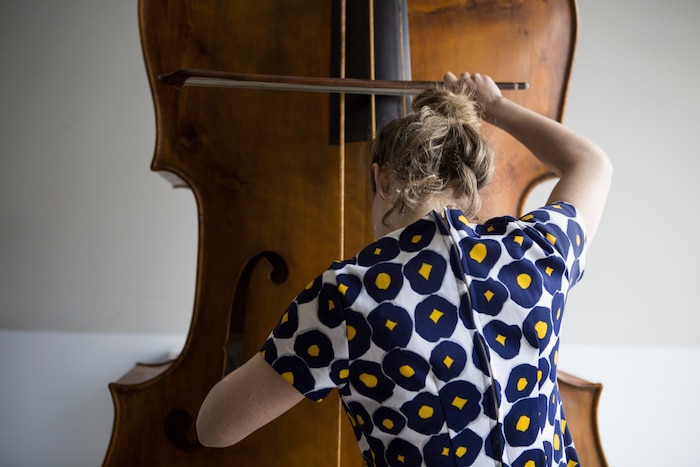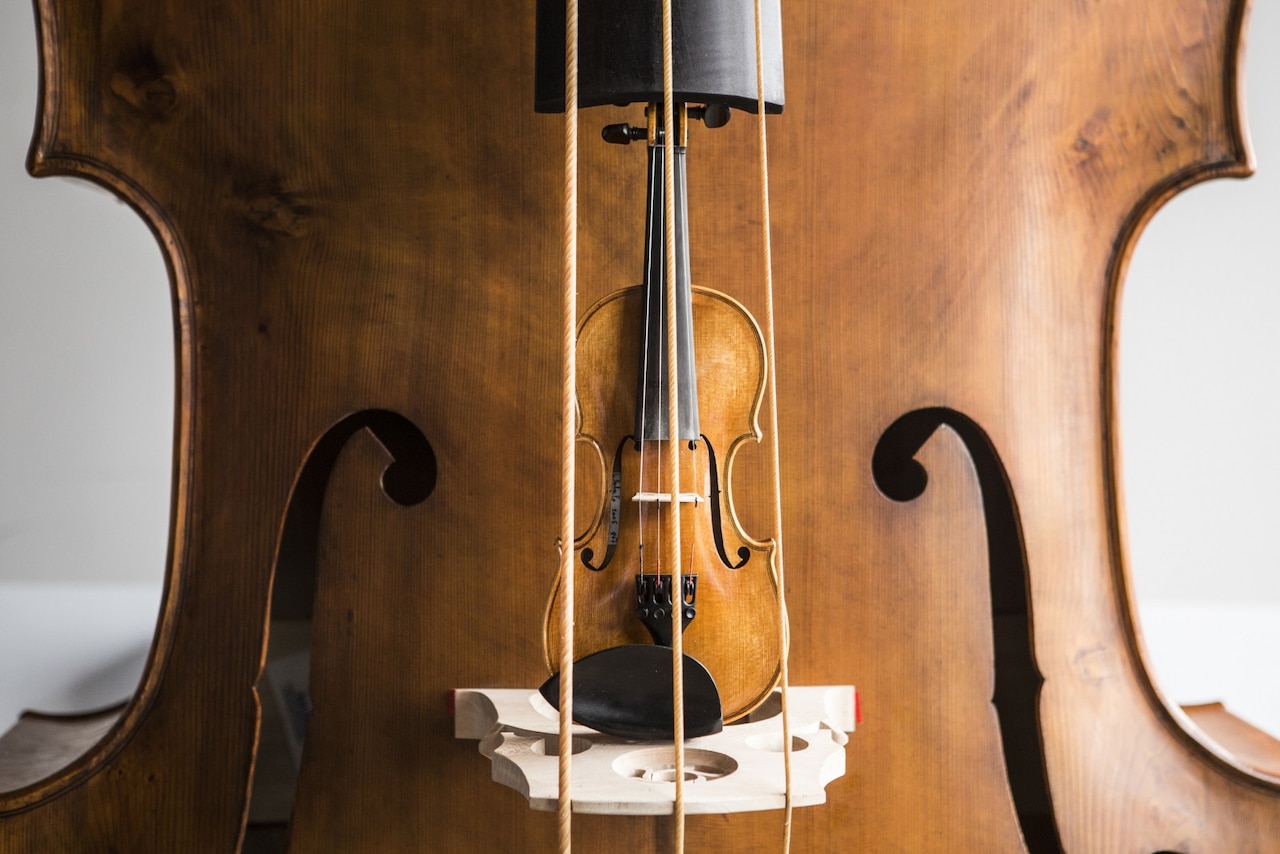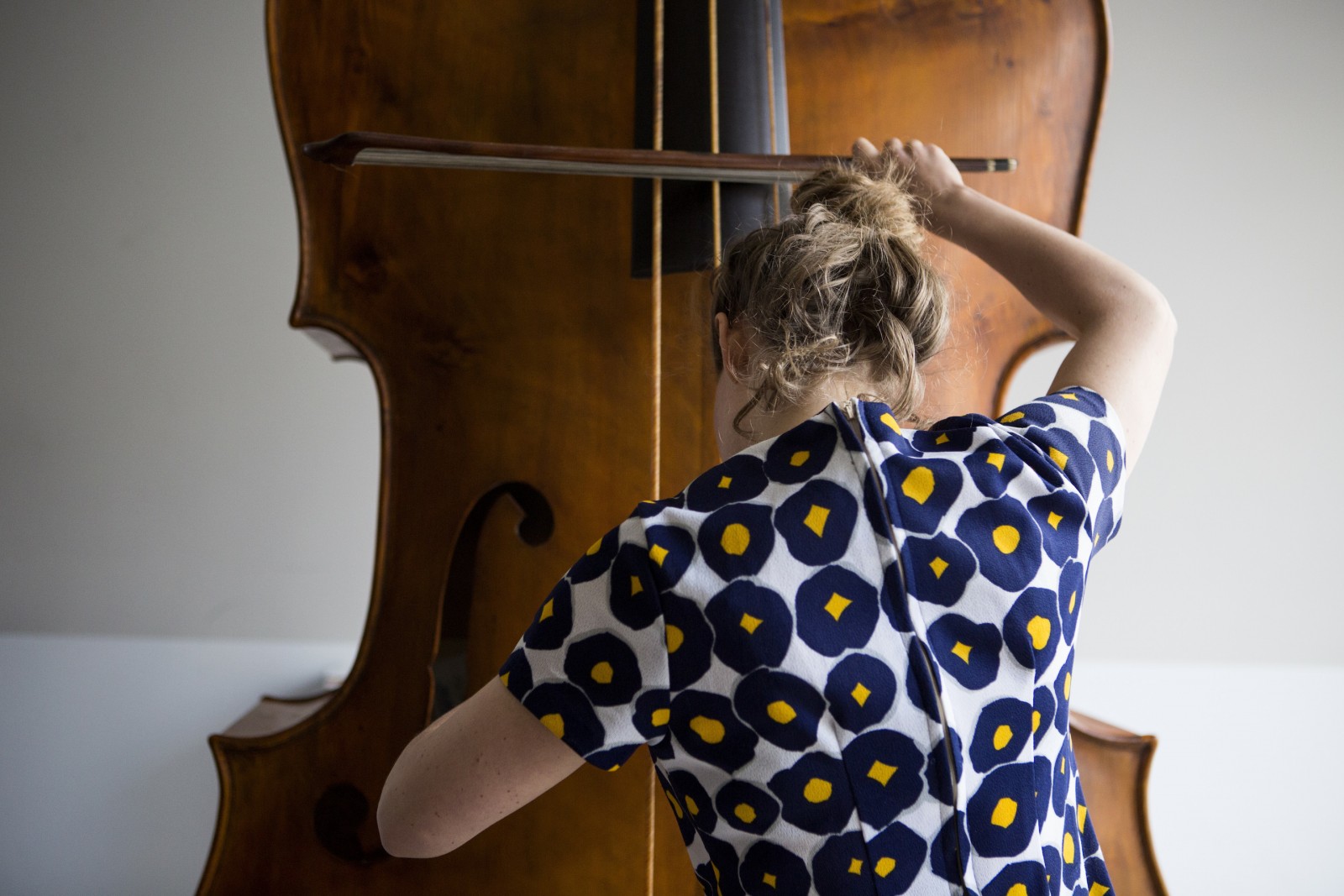Is The Octobass The World’s Rarest Classical Music Instrument?
Only seven have ever existed. Andy Battaglia reports from Norway on an extremely rare performance

Like a vision from a strange surrealist painting, rising up higher than is reasonable in any setting, much less a church, the curious instrument known as the octobass came out of hiding earlier this month, at a music festival in Norway. The creature has stalked the earth since around 1850, when it was first conceived by the French instrument-maker Jean-Baptiste Vuillaume. But the octobass has long since commanded attention mostly in the realm of myth, when it commands attention at all.
Until, that is, a new one is born and joins the very few others in existence. The latest is formidable, standing 3.85 meters tall (or more than 12.5 feet) and outfitted with custom strings made from the guts of 200 sheep. The body comprises five different varieties of wood, and the tuning pegs are roughly the size of small salad plates. Sound-wise, it’s a bellowing monster. Certain notes dip below the threshold of human hearing.

“It gets into your nervous system,” said Guro Moe, an experimental musician who commissioned the building of the new octobass. “When there are other instruments and sounds around, at times I can’t hear when I play the deep tones, but I can feel it.”
Moe has played standard upright bass for years, but she is no classicist. She has a noise rock band, MoE, and she counts experimental artists such as Lasse Marhaug and Okkyung Lee among her peers. So her interest in the octobass is anything but conventional.
But then, of course, nothing can be conventional around an instrument so summarily strange and rare. The new octobass is the seventh known example in the world, according to Wolfgang Staab, the German luthier who built it. Staab has worked to restore old basses in a village near Frankfurt for 25 years. When Moe asked if he might know where she could find an octobass, he decided to devote himself to building a new one from scratch.
He traveled to Belgium to study an extant specimen, and he drafted custom adjustments, making his octobass slightly bigger than most. (In the end, the octobass is about twice the size of a normal double bass.) “You need wood that is stiff and nevertheless light,” he said. “In the Alps, at a certain height, there are spruces that grow very slow and therefore have very little resin, which makes the wood light and with dense grain.”

He worked on the instrument for 13 months before it was ready for its first exercise. “To tell the truth, I was a little bit disappointed when I played it the first time, because I found out the room where it stands is extremely important,” he said. “When I tried it, I stood there bowing the low string and heard almost nothing. It was like a motorcycle with the carburetor adjusted wrong. Fft-fft-fft-fft. You could hear the air move but not the sound. Then I asked my girlfriend to step on the other side, and there it sounded. It was better, but the first time I was really convinced was when I tried it in a nearby church.”
A different church, in Oslo, was the site of the new octobass’s premiere, as part of the Only Connect Festival of Sound. The event’s theme was “The Deep,” with considerations of underwater sounds, musings on Miami bass, and a tour of an anechoic chamber. The octobass featured in an ensemble performance by The Touchables, a group assembled by Moe for the sake of making sense of her new instrument. (Another tool in the group is the piccoletto violin, extremely high in its register.)

The piece they played was dynamic and varied, centered on the octobass in parts. When it played in the foreground, it sounded gruff and guttural; when it meshed with other instruments, its emissions were still palpable, suggesting a sense of something looming in the room. Either way, it was hard to take your eyes off the instrument, as Moe played while standing on a platform with a bow moving slowly over the instrument’s three thick strings.
“It’s really physical – the bow needs other kinds of pressure in order to create deep sounds and get the full tone of the instrument,” Moe said of her technique, which sometimes involved two arms on the bow. (Otherwise, the left hand, instead of fretting as on a regular bass, works a series of levers that change the length of the strings like a capo on a guitar.) “I had to experiment and discover new sounds that I have never experienced on my other bass. To recognize all these new things has been part of the process of learning how to play it. There’s a universe more to discover, for sure.”
Moe’s plans now include finding a home for the octobass, ideally at a music school or a center where other musicians can put it to use. As for Staab, he plans to make good on the experience he gained as a first-time octobass-maker. “I am busy supplying new materials for another model,” he said. “When you make one, you can then improve on the next.”
